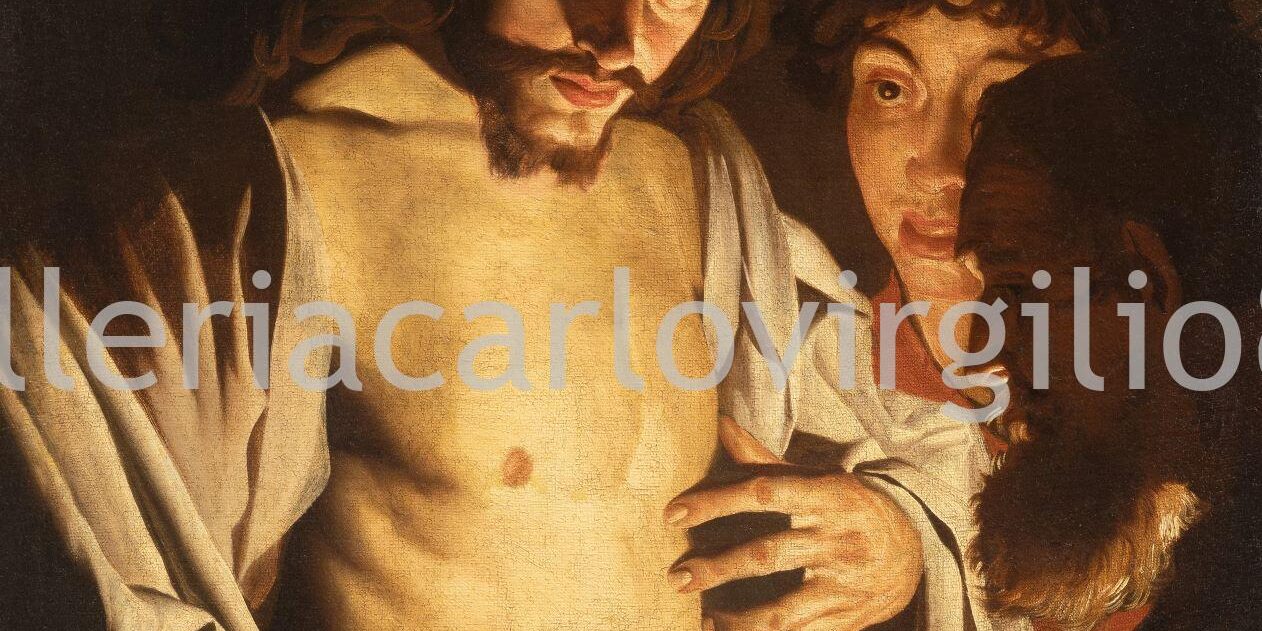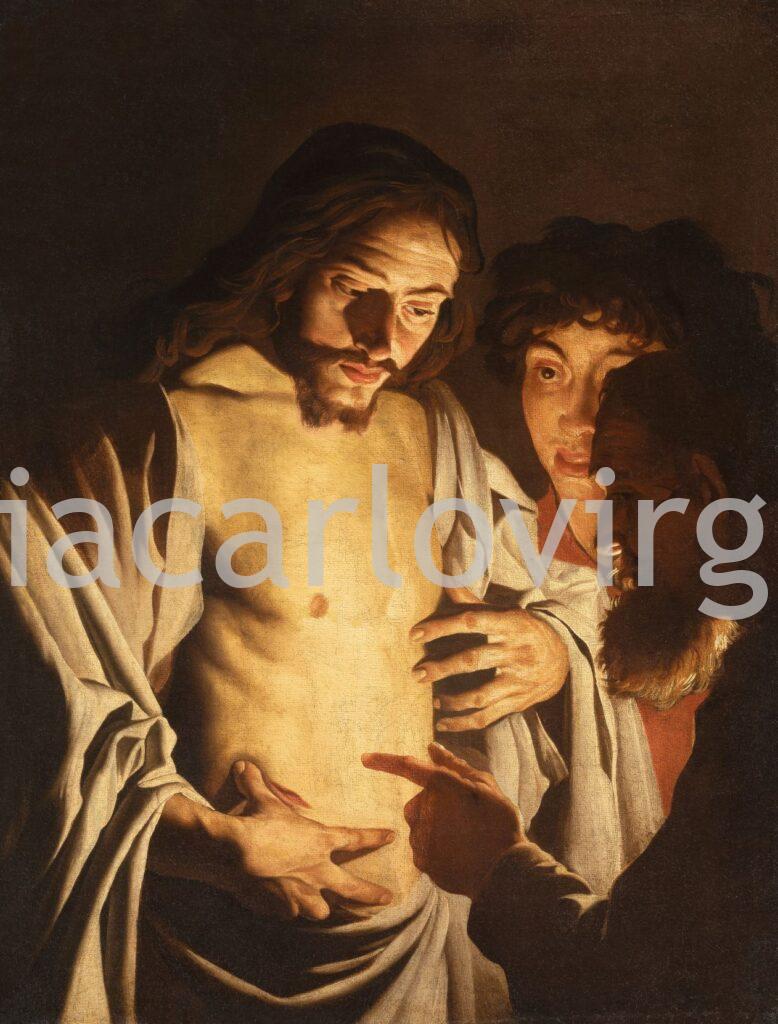| NOT AVAILABLE

Matthias Stom
Netherlands, circa 1600 – Northern Italy (?), post 1645
Incredulity of St. Thomas • 1630/40 ca.
oil on canvas, 99.5 x 74.5 cm
Caravaggesque theme par excellence – Merisi’s famous prototype, today in Potsdam, was taken on as the manifesto of his pictorial method, based on the restitution of the sacred and mythological to the condition of “natural thing,” in other words imbued with a dimension of daily labour and direct experience – this Incredulity of St. Thomas is a vigorous and, as far as we know, unpublished work by Matthias Stomer.
The authorship of the great Dutch painter, last protagonist of the Caravaggesque movement in Europe, is immediately apparent; comparisons with Stomer’s production of Christological subjects, for the most part set in candle light, are so specific as to make any other proof superfluous.
The painter’s vast oeuvre, still awaiting rigorous cataloguing after the initial monographic works of Benedict Nicolson, so far includes three versions of the pericope that recounts the doubts and resistance of the apostle Thomas faced with the risen Christ, taken from the Fourth Gospel (20, 27-28): the canvas at the Prado (fig. 2), the most well-known of all, vertically developed, like the work in question; and two more with horizontal layouts, one in a private collection in Bergamo, the other, probably older, at the Fondazione Brescia Musei, about whose authenticity there are some perplexities, which can most likely be explained by conservational damage.
The version discussed here, in an excellent state of conservation, stands out from the others for its more concentrated and intimate style, as though the inspection of the wound in Christ’s side were a truly personal and incommunicable experience; besides Christ, there are only two figures and it is hard to make out the features of Thomas, whose profile is in deep shadow.
While, as we have said, attribution poses no problem, as usual the painting’s chronology is more difficult to ascertain, given the author’s strongly standardised language: the execution certainly points at Stomer’s southern phase, although it is trickier to work out the exact moment, there being no clear separation between his Neapolitan and Sicilian production (the latter, according to the most recent documentary research, being quite short, between 1640 and 1643); the more compressed format with respect to the monumental and baroque compositions carried out on the island, as well as the similarity of physiognomic types and warm luminous atmosphere with the series of canvases donated in 1635 to the church of Sant’Efremo Nuovo in Naples – now divided, in their core nucleus, between Museo di Capodimonte (fig. 1) and Pinacoteca Metropolitana in Bari – suggest the fourth decade of the seventeenth century, which is to say in the middle of Stomer’s sojourn in Naples.
Giuseppe Porzio
Naples, 15 August 2021
The Carlo Virgilio & C. Gallery searches for works by Stom Matthias (1600 ca.-dopo 1645)
To buy or sell works by Stom Matthias (1600 ca.-dopo 1645) or to request free estimates and evaluations
mail info@carlovirgilio.co.uk
whatsapp +39 3382427650
